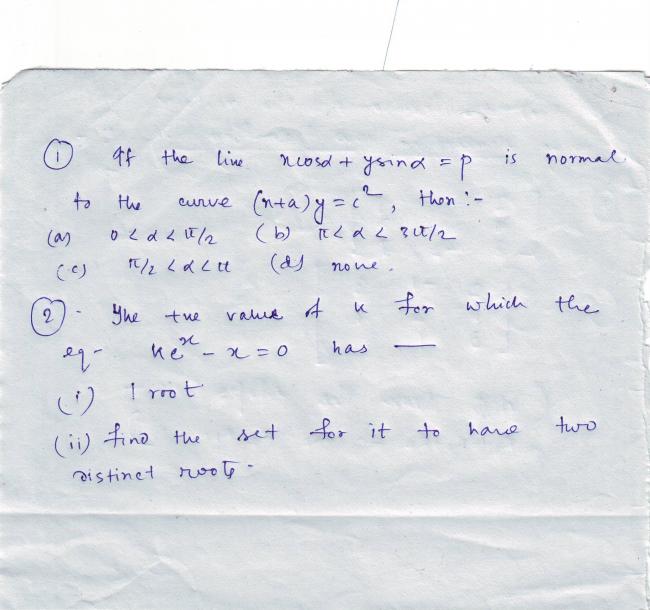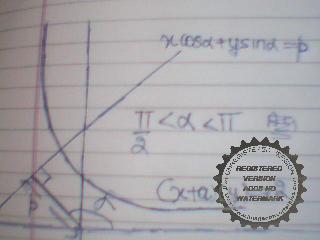somebody respond....
9 Answers
take a=0,c=1 in the first question
so xy=1
so y' =-1/x2
y' < 0
slope of line is -cot\alpha
since it is normal to the curve ,
\frac{{dy}}{{dx}}=tan\alpha
dy/dx < 0 for all x
hence tan(aplha)< 0
see graph of ex is symmetric about line y=x......so for it to actually touch the line y=x , k should be in fractions( since -ve value of k is not allowed) becoz if k>1 then graph of ex should bend "away" from the line y=x....
so if in the options fractional value of k is given then that should be the ans.. :)
for the second one the graph of kex touches the line y=x or y=x is the tangent to this curve...
y=kex
If the point of contact is a, a
then first a,a lies on the curve so a=kea
dy/dx = k ea=1 (slope of the line y=x)
so k = e-a
so we have a=1
so the point of contact is 1, 1
and k=1/e
Try the sub part yourself.
for second one we can use rolle's theorem???
nishant bhaiya reply...

